Panier
Close
- No products in the cart.
Sous total (Hors frais de livraison)
0,00€
Payer
Expédition et livraison
Réparation et maintenance
Wingfoil is a gliding sport that’s relatively quick to learn, much more accessible than windsurfing and more practical than kitesurfing, since you don’t need anyone to launch the kite and it takes up less space when setting up your equipment. Starting from scratch, you first learn to handle the wing, then to steer the board. On the first few flights, it’s then a matter of mastering the trim to stay stable and balanced. But transitions are a little more technical: you can turn into the wind by tacking, or with the wind at your back by jibing.
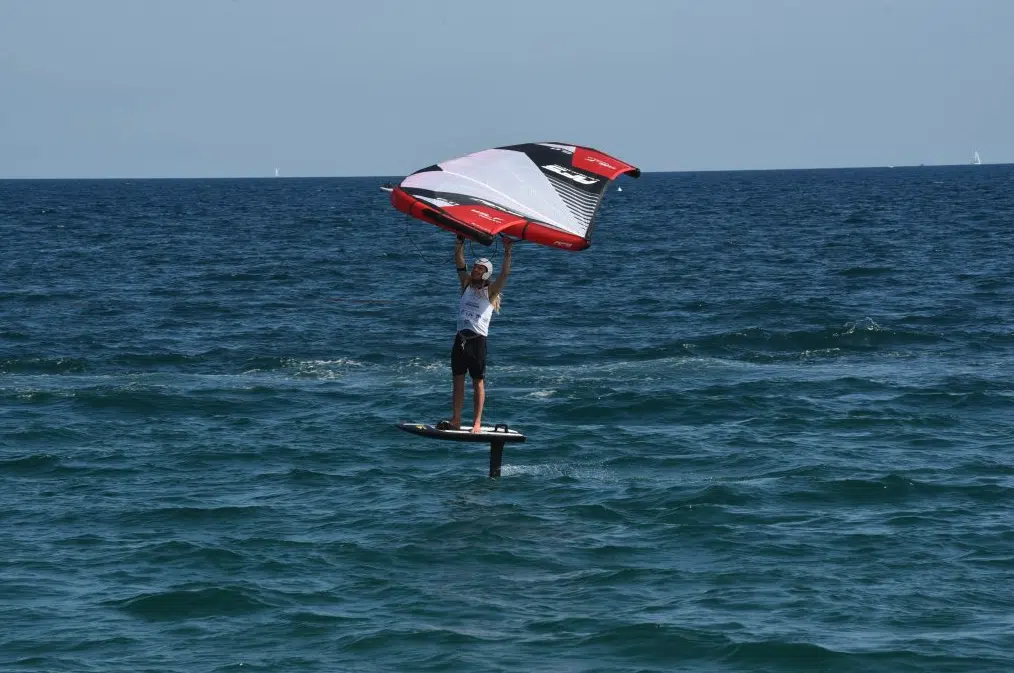
In wing sailing, as in windsurfing, two maneuvers are essential for changing tack. Although you lose a little distance, the jibe is the easiest transition, especially for beginners.
The jibe is fundamental. It consists of changing direction by making a downwind curve without stopping. More precisely, it’s the action of turning around while flying on the water, and losing as little speed as possible!
Unlike tacking, which is done into the wind, jibing is done with the wind at your back. It’s a fast gybe.
This turning action is particularly fun to do, and allows you to explore a wide sailing area. On the other hand, knowing how to jibe in wingfoil allows you to change tack smoothly and efficiently in irregular winds. Or to make the transition more quickly to avoid an unexpected obstacle.
Successful jibing ultimately depends on perfect harmony between board, foil and sail.
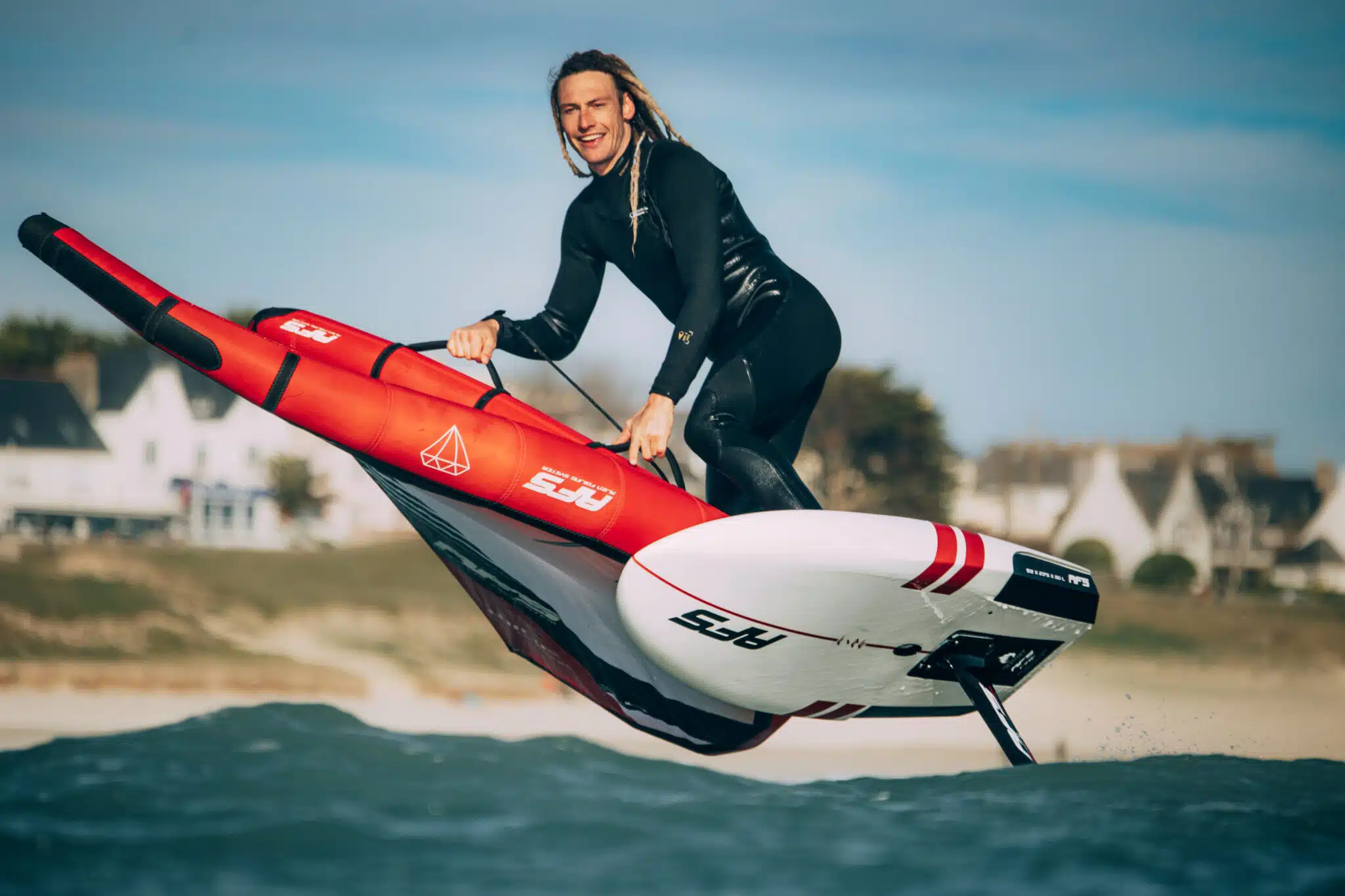
The faster you go, the better your balance and the easier the transition.
Shift your weight slightly forward to guide the float. And gently press down on the board with the tips of both feet.
Play with your wing by gradually bringing it forward, raising it so that its leading edge faces into the wind. It should be feathered, i.e. more or less horizontal to the surface of the water. In this way, it will move less and become neutral during the transition. It will also have less drag.
For your first jibes, keep sailing as long as possible in toe side (inverted feet) after turning. You’ll be able to change feet only when you’ve regained a good pace in the other direction.
This is the second jiber technique. Here, the foot change takes place before the curve, which can be more fluid for some and more reassuring for others.
Before managing the wing, the rider starts by inverting his feet. In other words, he puts himself in toe side position. To do this, if you’re still in the learning phase, slow down a little by shocking your wing, and bring your back foot closer to your front foot without taking big steps. Then, at the same time, your back foot slips in front of your front foot, toes facing into the wind. This is often the trickiest part of the transition and prone to falls. On the other hand, if you get this part right, the rest of the jibe will be much easier, with the tack change coming almost naturally.
During the transition, be sure to straighten your body and accompany your wing smoothly, both upwards and horizontally. This will help you avoid overspeeding and getting ripped off at the same time.
The most common jibe errors are :
The jibe is a transitional maneuver that requires patience and perseverance to master. By spotting and correcting your mistakes, you’ll make rapid progress and enjoy wing foil sailing even more. You’ll want to do your training on a flat stretch of water with a steady wind (around 18-20 knots). And don’t forget to check out a wing tutorial on YouTube, or sign up for a course at a sailing school: these resources can help you become a good wing freerider!

Click & Collect
Secure payment in 3 or 4 instalments
Advice from enthusiasts
Satisfied or your money back
2 to 3 years warranty
Worldwide delivery
Votre emplacement actuel et les langues disponibles
Your current location and available languages
Build your complete foil equipment according to your practice and objectives.
Answer a few quick questions and get a suggestion.
Compare up to three stabilizers side by side.
Coming soon...
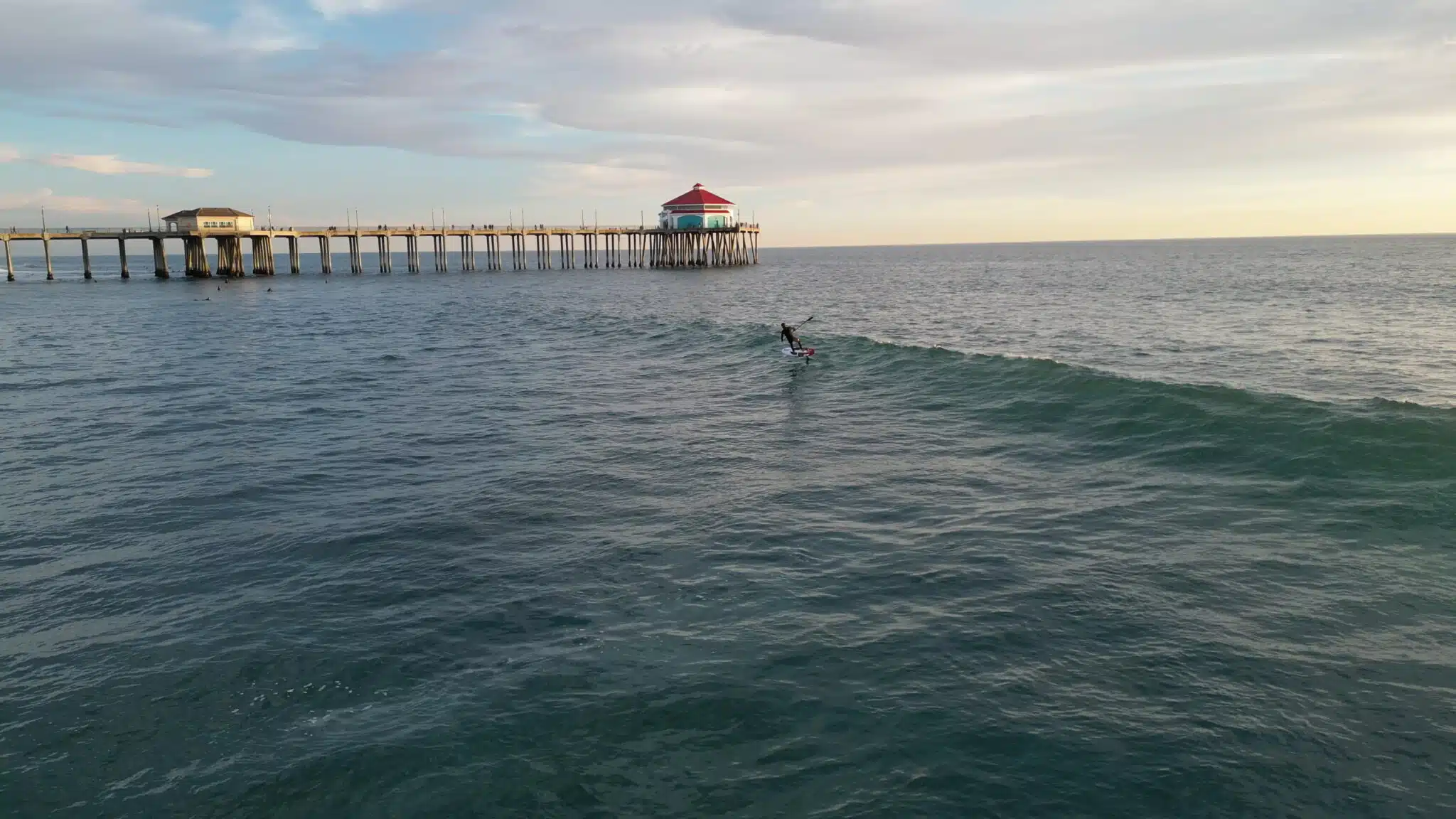


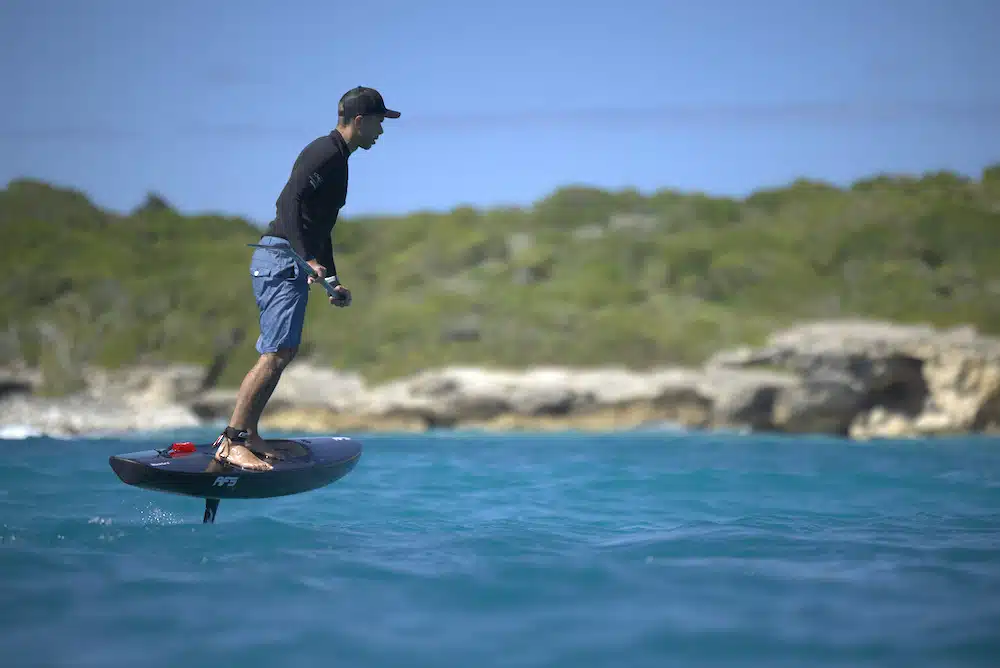
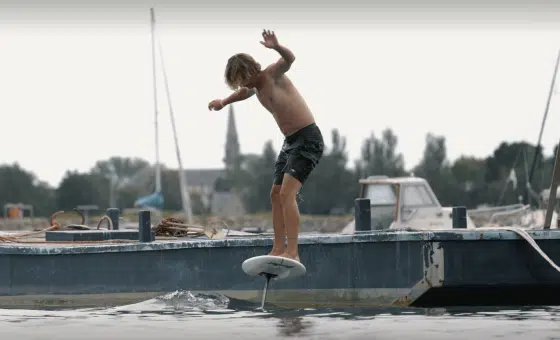
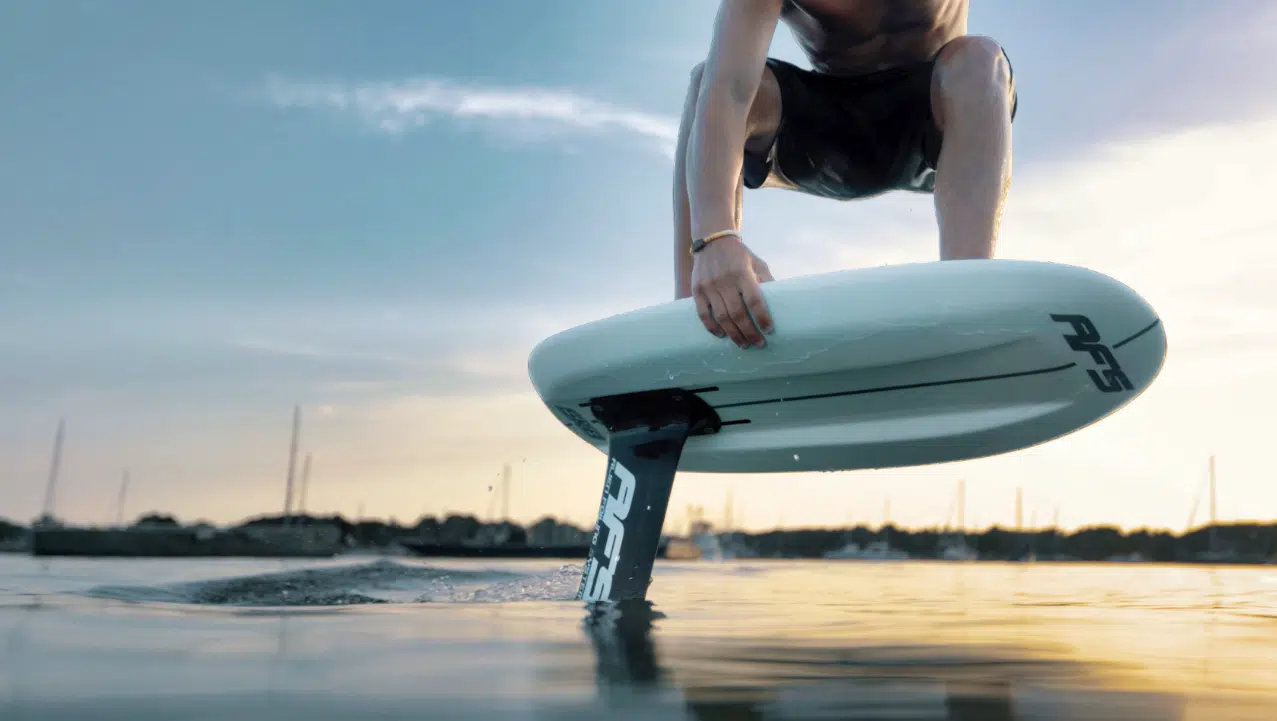
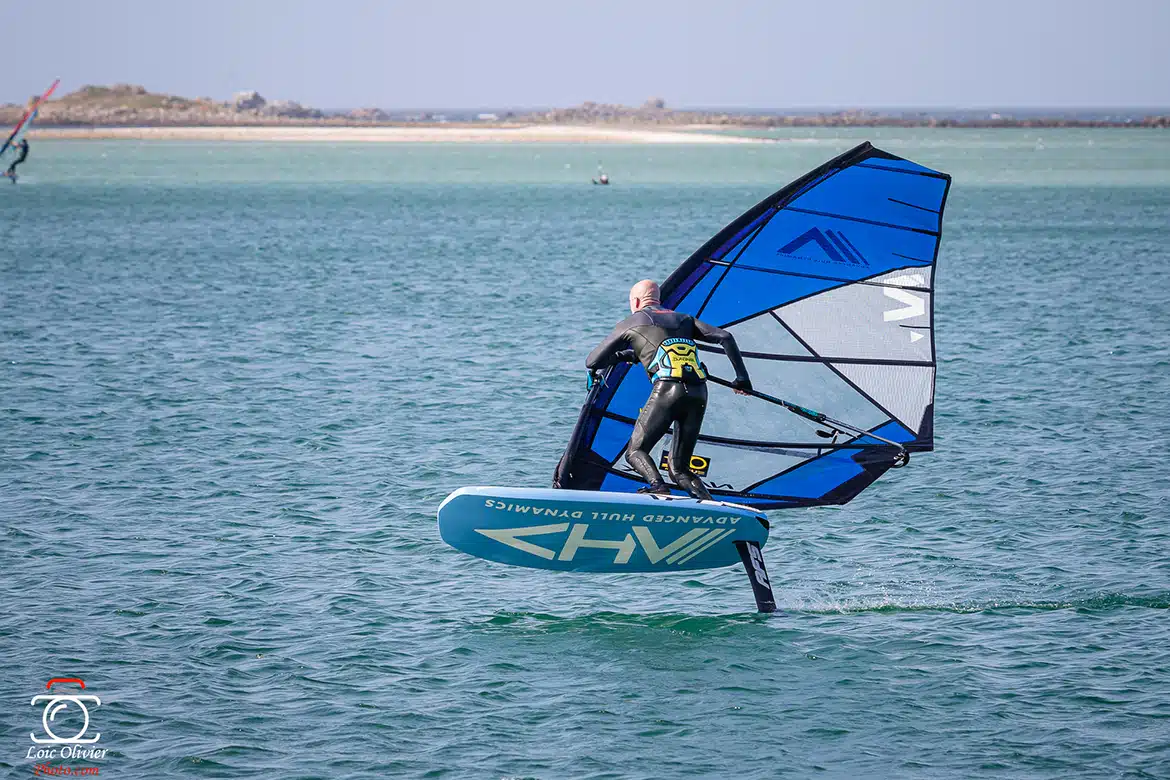
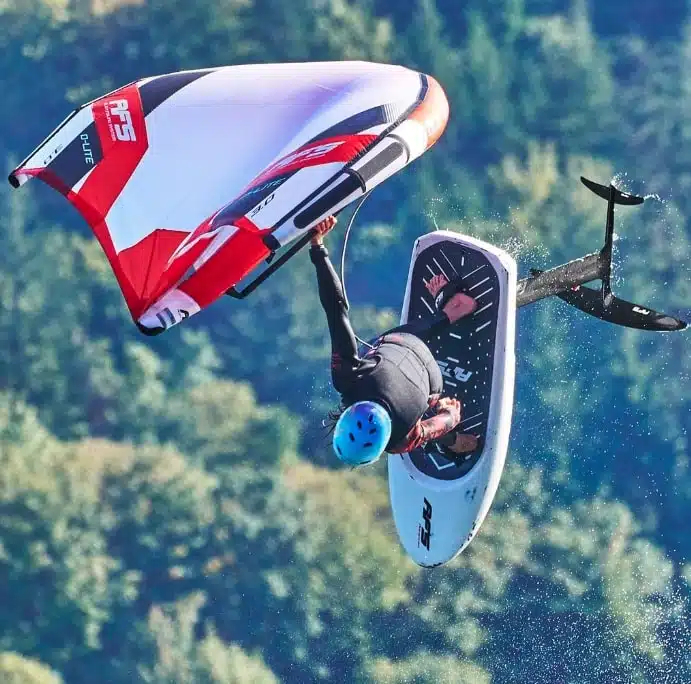
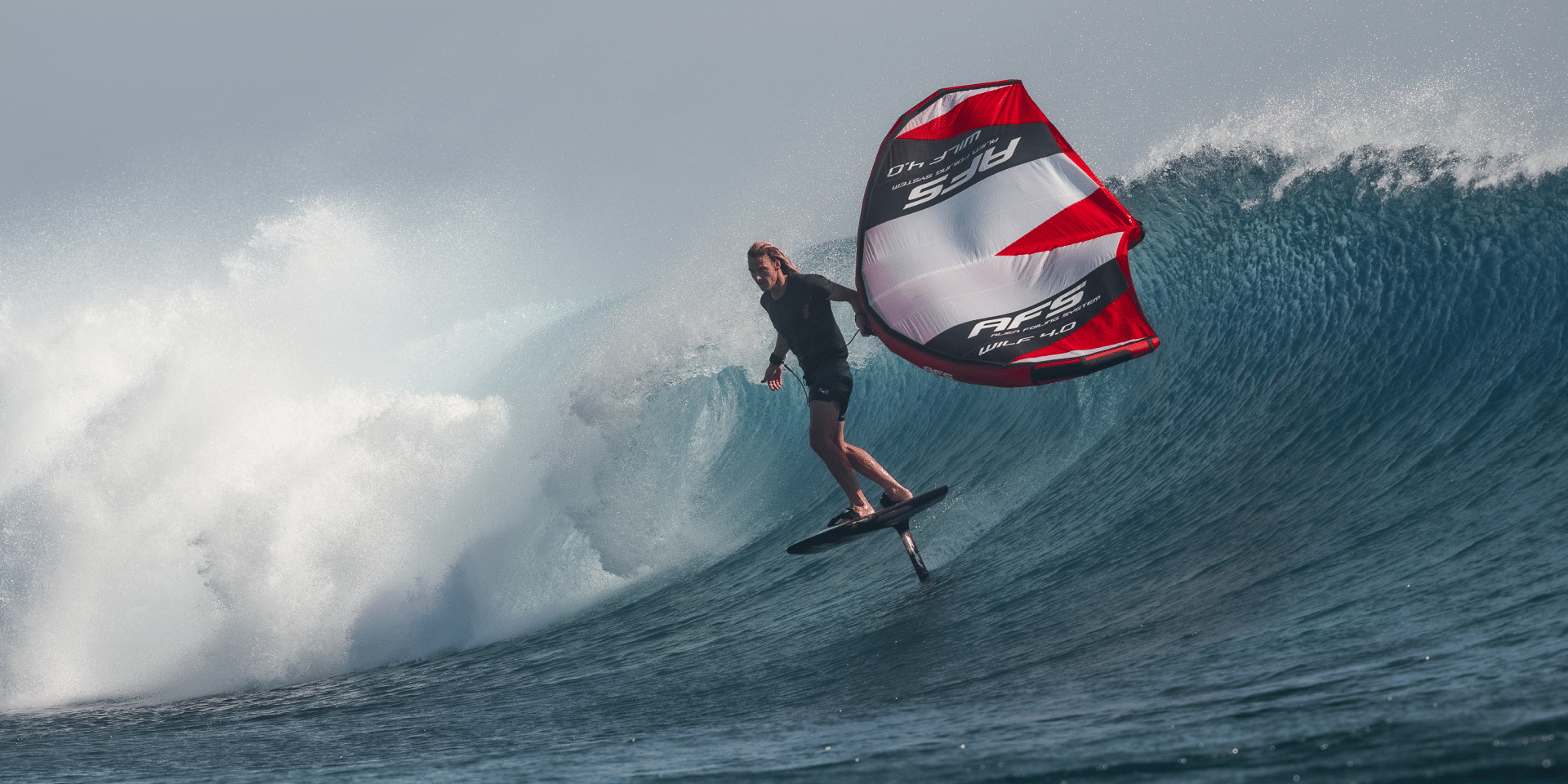
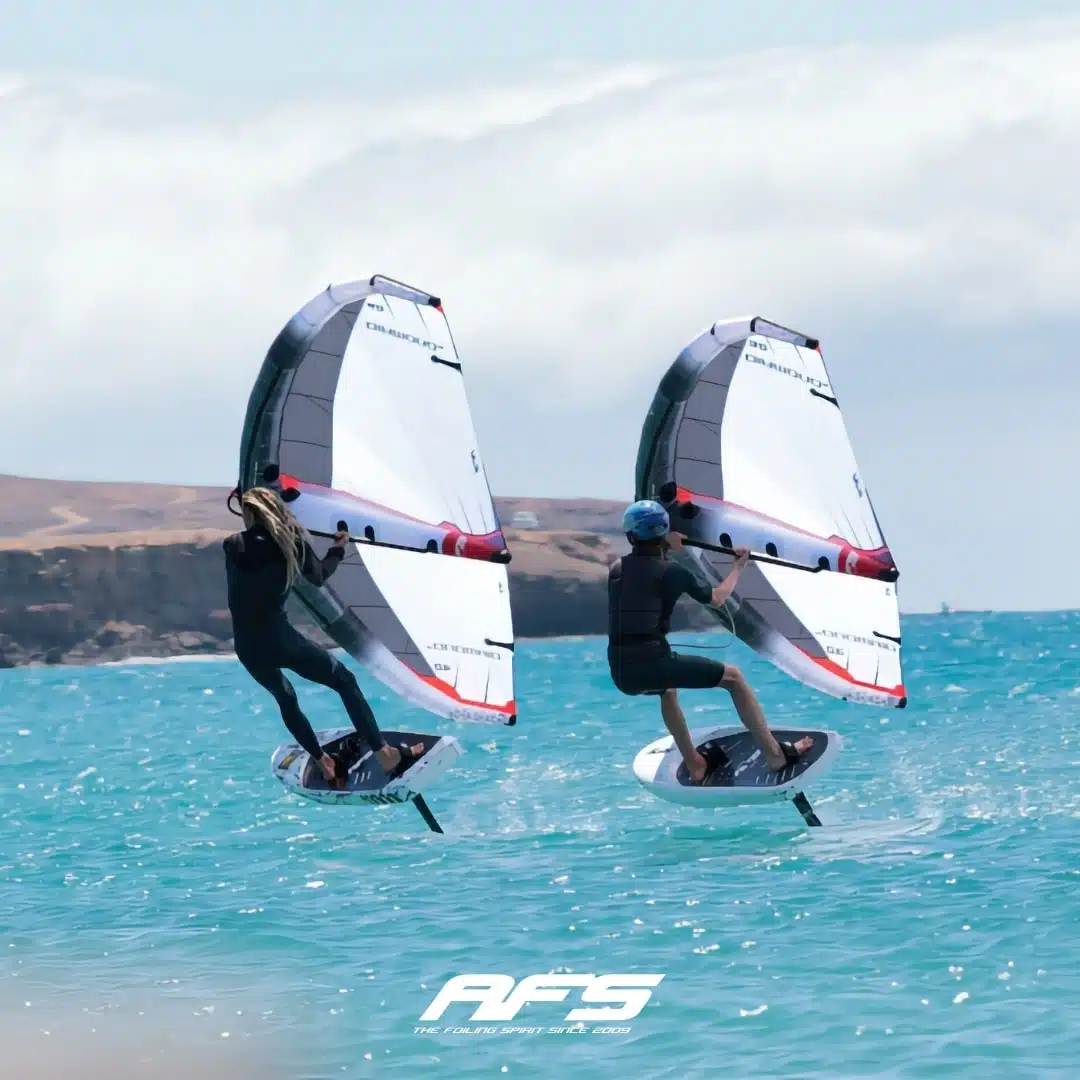
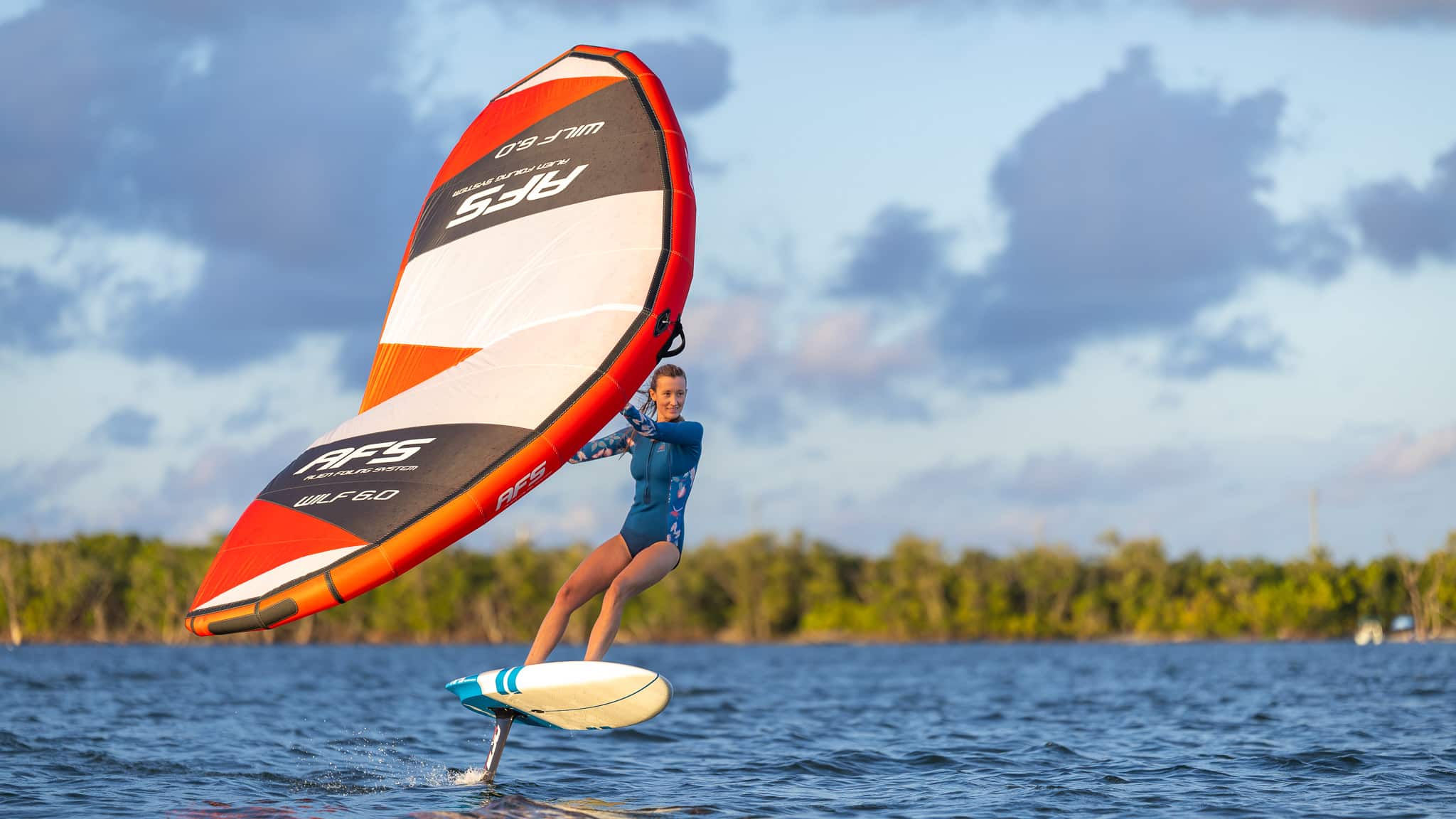

You will receive a product in excellent condition, with a few minor scratches from use.
Your product may have a few minor scratches or visual defects, but it's ready to take to the water again!
Despite deeper scratches or more pronounced visual defects, your product can take to the sea without hesitation: at this price, it's a shame to miss out!